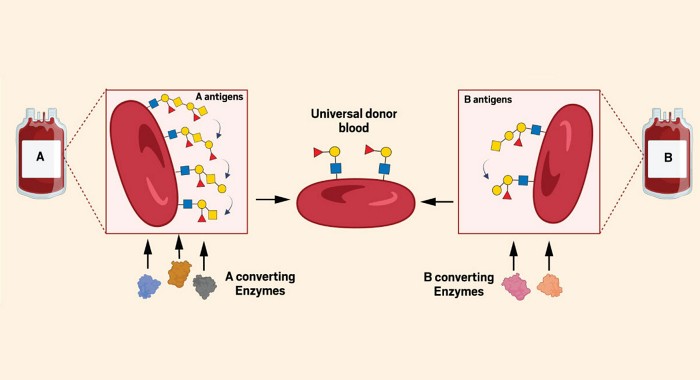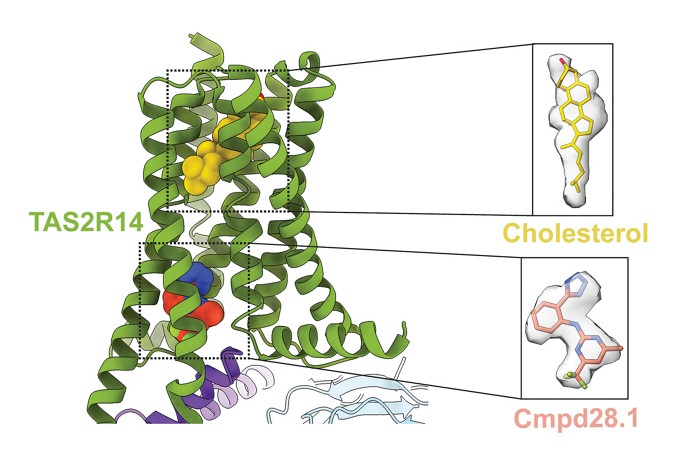Advertisement
Grab your lab coat. Let's get started
Welcome!
Welcome!
Create an account below to get 6 C&EN articles per month, receive newsletters and more - all free.
It seems this is your first time logging in online. Please enter the following information to continue.
As an ACS member you automatically get access to this site. All we need is few more details to create your reading experience.
Not you? Sign in with a different account.
Not you? Sign in with a different account.
ERROR 1
ERROR 1
ERROR 2
ERROR 2
ERROR 2
ERROR 2
ERROR 2
Password and Confirm password must match.
If you have an ACS member number, please enter it here so we can link this account to your membership. (optional)
ERROR 2
ACS values your privacy. By submitting your information, you are gaining access to C&EN and subscribing to our weekly newsletter. We use the information you provide to make your reading experience better, and we will never sell your data to third party members.
Biochemistry
Smart Glass Made In One Step
Materials: Titanium dioxide nanowires turn a glass electrode into a transparent, color-changing pane
by Katherine Bourzac
July 19, 2012

Buildings would save energy on air conditioning if they installed smart windows that change color to block out sunlight on hot days. Some smart windows are on the market, but they are expensive. A new one-step method for making window coatings of transparent color-changing nanowires could simplify and bring down the cost of the window manufacturing process (ACS Nano,10.1021/nn300787r).
According to the National Renewable Energy Laboratory, buildings use 71% of the electricity consumed in the U.S.; about 30% of that load comes from the electricity needed to make up for energy lost through windows. Electrochromic windows, which darken or lighten depending on the voltage across them, could help by darkening to block heat transfer from infrared light. But these windows require multiple layers of materials and are complex and expensive to make.
The structure of an electrochromic window resembles that of a battery. Glass electrodes sandwich an electrochromic layer, typically made from tungsten oxide, and an electrolyte, usually containing lithium ions. A voltage across the device makes ions move into the electrochromic material, changing its optical properties so that it absorbs visible and IR light. Reversing the voltage makes the ions migrate out, and the window becomes colorless again.
Electrochromic windows need an additional antireflective exterior coating to increase the windows’ transparency—without it, they are quite dark. These coatings increase the windows’ cost. To eliminate the added cost, Kuan-Jiuh Lin, a chemist at National Chung Hsing University, in Taiwan, has been trying to make a coating that’s both antireflective and electrochromic.
Titanium dioxide nanowires have these properties but growing them on glass electrodes is not easy, Lin says. So he developed a simple method. First he and his colleagues sputter a thin layer of titanium on the glass electrode. Then they dip it into a vessel containing sodium hydroxide and warm it to 80 °C for an hour. The base reacts with the titanium surface to form titanium dioxide nanowires. Lin can make nanowire coatings of different thicknesses by varying the concentration of the base. He tested the resulting materials to find the most transparent and most porous one. Greater porosity allows the lithium ions to move more freely through the electrochromic device. The best-performing nanowires came from a 2.5 M solution. Lin used these to make a small, 1.69-cm2 electrochromic window that turned light grey when he applied -4.5 volts across it. Lin could reverse the color change by applying 1 volt. Its refractive index, 1.37, was about the same as that of the most common antireflective coatings.
The concept of combining antireflective and electrochromic properties in a single material “has been around for a while,” says Sarbajit Banerjee, a chemist at the State University of New York, Buffalo. Lin, he adds, has shown that it works.
However, Banerjee is skeptical that electrochromic smart windows will ever be widely adopted in buildings because the battery-like structure means they’re complicated to install, and he suspects, will remain expensive. Banerjee develops materials that change color when their temperature changes, without an applied voltage, and that can be sprayed onto windows. He believes simpler designs, such as his own, could help smart windows catch on in the market.




Join the conversation
Contact the reporter
Submit a Letter to the Editor for publication
Engage with us on Twitter